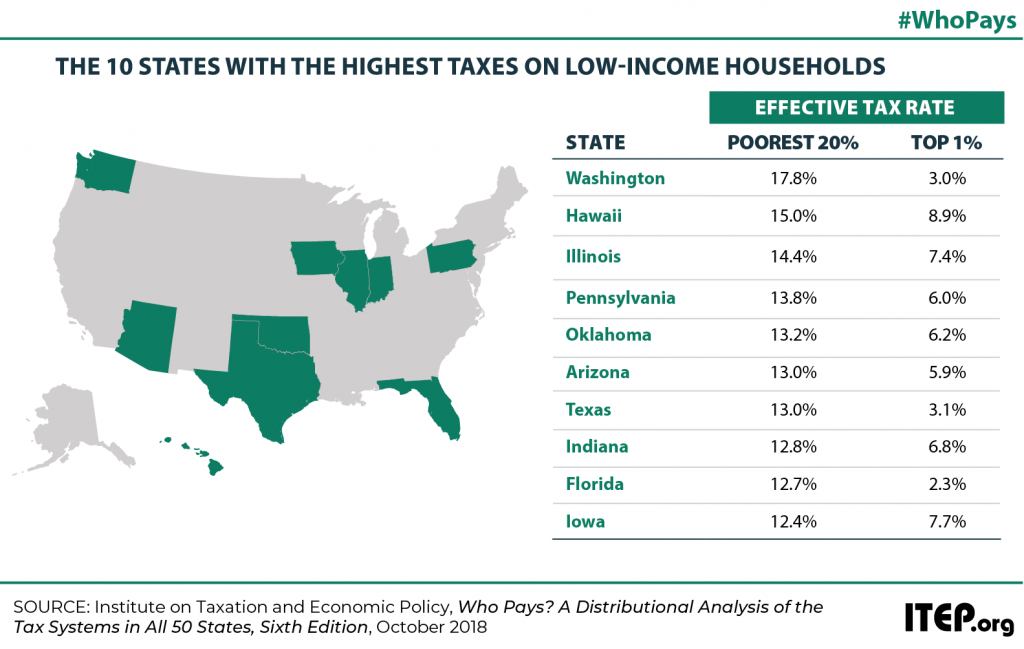
Indiana
ITEP’s Neva Butkus Discusses Property Taxes in Indiana
October 3, 2024
On September 30, Policy Analyst Neva Butkus discussed Indiana property taxes and how Hoosiers could benefit from a circuit breaker policy at an event hosted by the Indiana Fiscal Policy Institute and Prosperity Indiana. Check out her slides here, and an article on the panel here.
Testimony of Prosperity Indiana’s Andrew Bradley Before the Indiana State and Local Tax Review Task Force
January 16, 2024
On January 10, Andrew Bradley, Policy Director at Prosperity Indiana, testified before the State and Local Tax Review Task Force of the Indiana General Assembly. During his presentation, Bradley highlighted Prosperity Indiana’s tax policy priorities and ITEP’s Who Pays? findings. To watch the video, click here (Bradley’s testimony begins at 1:55:40) To read written testimony […]
Testimony of Neva Butkus Before the Indiana State and Local Tax Review Task Force
October 20, 2023
Today ITEP State Policy Analyst Neva Butkus presented to the Indiana State and Local Tax Review Task Force. For a related blog from Neva, click here. For her slide deck, click here. Good morning members of the State and Local Tax Review Task Force, Thank you for providing me the opportunity to share ITEP’s findings […]
Eliminating Indiana’s Income Tax Would Jeopardize Public Services & Create a Windfall for the Well-Off
October 19, 2023 • By Neva Butkus
Meaningful investments in Indiana’s future require a smart, and fair, tax code that recognizes current economic realities and can raise a sustainable stream of funding from those most able to pay.
News and Tribune: In Indiana and Illinois, Taxes Hit Low-earners Hard
October 25, 2018
TERRE HAUTE -- Low-earning residents of Indiana and Illinois pay a greater share of state and local taxes than those in all other Midwestern states, and those in most states nationally, according to a new study by a non-partisan think tank.
Indiana Institute for Working Families: New Analysis: Indiana’s Tax System is Among the Dozen Most Regressive in the Country
October 17, 2018
The new ‘Who Pays?’ analysis follows the Institute’s August report ‘The Status of Working Families in Indiana, 2018’ which found the wealthiest Indiana earners have received an extra $2,446 from combined state income, corporate, and fuel tax changes since 2012, while taxes for the bottom 60% of middle class and working families have increased by an average $36.

ITEP analysis reveals that many states traditionally considered to be “low-tax states” are actually high-tax for their poorest residents. The “low tax” label is typically assigned to states that either lack a personal income tax or that collect a comparatively low amount of tax revenue overall. But a focus on these measures can cause lawmakers to overlook the fact that state tax systems impact different taxpayers in very different ways, and that low-income taxpayers often do not experience these states as being even remotely “low tax.”
Low Tax for Whom? Indiana is a “Low Tax State” Overall, But Not for Families Living in Poverty
October 17, 2018 • By ITEP Staff
Indiana’s tax system has vastly different impacts on taxpayers at different income levels. For instance, the lowest-income 20 percent of Hoosiers contribute 12.8 percent of their income in state and local taxes — considerably more than any other income group in the state. For low-income families, Indiana is far from being a low tax state; in fact, it is the eighth highest-tax state in the country for low-income families.
Indiana Institute for Working Families: The Status of Working Families in Indiana: 2018 Report
August 1, 2018
Indiana faces a choice of whether to continue down a southward-leading path of low-road policies, or to rebuild its economy for Hoosier families. By adopting a policy agenda for working families that improves Indiana’s jobs with higher wage and labor standards; strengthens protections for Hoosier families including repairing the safety net and crafting consumer and job safeguards; and increases economic mobility through improved access to education, rebalancing the state’s regressive tax and budget structure, and focusing economic development on strengthening Hoosier families and communities, Indiana can reclaim its place as a leader in the Midwest and in the nation.
